You Should *Not* Store Your Tortillas In The Fridge

When you think of starchy foods, you probably think of foods like bread, potatoes, rice, and basically anything that has carbs. (Yum!) Some varieties of these foods may also be good for you in a way you never thought of before—they contain a type of carb called resistant starch.
Here’s the deal: “Resistant starch is a type of fiber found in some starchy foods,” says Mindy Patterson, PhD, RDN, the co-director of the Institute for Women's Health and an assistant professor of nutrition at Texas Women’s University. While most starch gets broken down into glucose, resistant starch, well, resists digestion and can’t be broken down.
Resistant starch resists digestion by human enzymes in the small intestine, kind of like fiber, explains Morgan Porpora, RD, an NYC-based nutritionist. As it ferments in the large intestine, it functions as a prebiotic that feeds the good, health-promoting bacteria in our gut. Some bacteria are considered good for your health is that they produce short-chain fatty acids (SCFAs), which provide many benefits, she explains.
Resistant starch is also very high in amylose, which is digested very slowly. FYI: Amylase is the digestive enzyme that breaks down most starches into glucose (a.k.a. the main source of energy for your body), but it does not work on resistant starches.
It is found in a variety of foods, some of which you may already have stocked in your kitchen. Here is everything you need to know about resistant starch and where you can find it.
Meet the experts: Mindy Patterson, PhD, RDN, is an assistant professor of nutrition at Texas Women's University. She is also a fellow of the Texas Academic Leadership Academy, a Distinguished Dean's Fellow, and the academic advisor for the Micheal E. DeBakey Veterans Affairs Medical Center dietetic internship.
Morgan Porpora, RD, LDN, is a nutritionist with Nutrition by Nathalie, LLC, a private practice in New York City. She is continuing her functional nutrition education with the Integrative and Functional Nutrition Academy.
There are four types of resistant starch out there.
Resistant starch comes in a few forms—four to be exact. They are aptly named types I, II, III, and you guessed it, IV.
Type I. This is the physically protected starch in whole or partially ground grains like legumes and pasta. That means human enzymes are physically unable to get through the cell walls, Porpora explains.
Type II. This is found in raw starch granules that cannot be gelatinized, which means it cannot be broken down in the cooking process. Think of foods like unripe bananas, raw potatoes, and some legumes.
Type III. This includes gelatinized starch that is cooked and cooled like potato salad.
Type IV. This type has been chemically modified to make it resistant to digestion. It is indigestible and not found naturally in foods, says Porpora.
Resistant starch may help you lose weight.
This carb has similar weight loss benefits to dietary fiber because they function very similarly in the digestive tract, explains Porpora. Eating foods with resistant starch can increase satiety and lead to lower calorie intake overall.
As resistant starch is indigestible but still travels through your GI system, it may also up the amount of energy we expend on digestion (called the thermic effect of food), which may also contribute to weight loss.
When resistant starch ferments in the colon, they produce SCFA that have been found to improve blood glucose regulation, reduce inflammation, regulate metabolism, and support weight loss.
It may have other long-term health benefits.
So far, the research on resistant starch is promising. In addition to promoting a healthy gut, it's been shown to increase insulin sensitivity, boost digestive health, and improve blood sugar control.
Studies have shown that increased resistant starch intake may lead to a more diverse (a.k.a. healthier) gut microbiome. That's because resistant starch foods contain prebiotic fibers which “ferment in your colon and feed the good bacteria in your gut,” Patterson explains. (For a refresher, prebiotics are food for probiotics, the good bacteria in your gut.)
Increased insulin sensitivity may contribute to a lower risk of chronic diseases, including cardiovascular disease, obesity, type 2 diabetes, and more, says Porpora. Plus, when your cells are efficient at using glucose, your body becomes better at stabilizing our blood sugar. This means fewer drastic dips and peaks, which can ultimately help manage cravings and those annoying feelings of hanger.
To reap these benefits, Patterson recommends including a serving of one of the foods below in at least two meals per day. She also points out that these benefits are linked to long-term, regular consumption of resistant starch—you can’t just eat a serving of cold potatoes and expect magic to happen.
Cooking and temperature matter.
Speaking of cold potatoes, how you cook your resistant starch foods matters. That's because heat can affect the structure of starch molecules. For example, “when you cook a potato, heat opens up the starch granule and makes it more accessible to our digestive enzymes,” Patterson says. When this happens, the starch enters the bloodstream as glucose—a.k.a. sugar.
On the other hand, “when you cook a potato and then chill it, that starch granule closes up," she says. "Since it can’t be broken down by enzymes, it doesn’t enter the bloodstream as glucose, it enters the colon and can be fermented by bacteria.” In other words, that's how it becomes a prebiotic.
That said, it varies from food to food. (Check out our prep tips for each food in the list below.)
Want to learn more about healthy eating? Here's what Biggest Loser chef Devin Alexander eats in a day:
Want to add more to your diet? Try these resistant starch foods:
1. Cooked, chilled potatoes
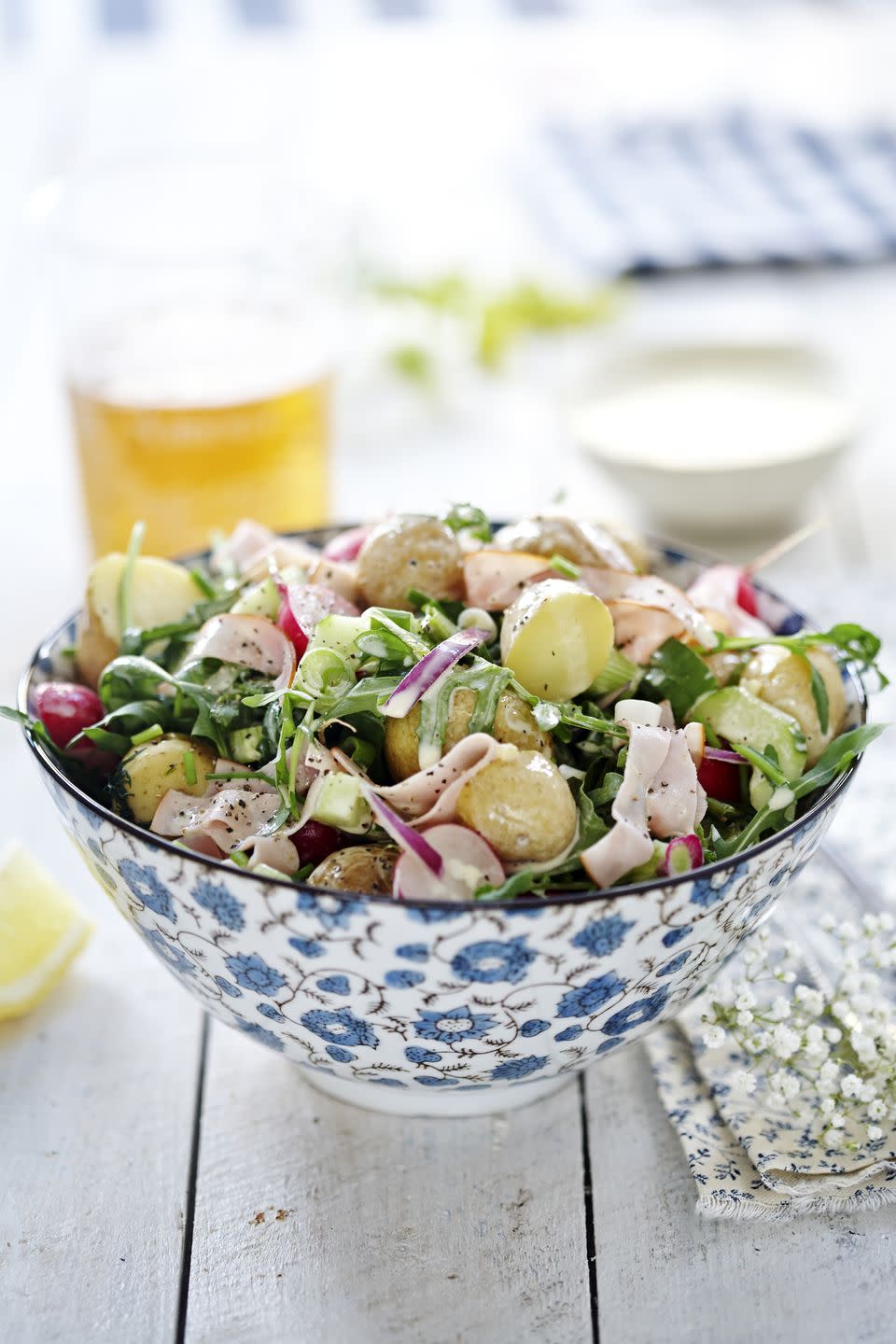
The starch in hot potatoes is easy to break down, so you’ll need to eat your cooked potatoes cold in order to get resistant starch. To make this palatable, Patterson suggests serving them in a potato salad. (Because, plain cold potatoes? Hard pass.)
2. Beans and legumes
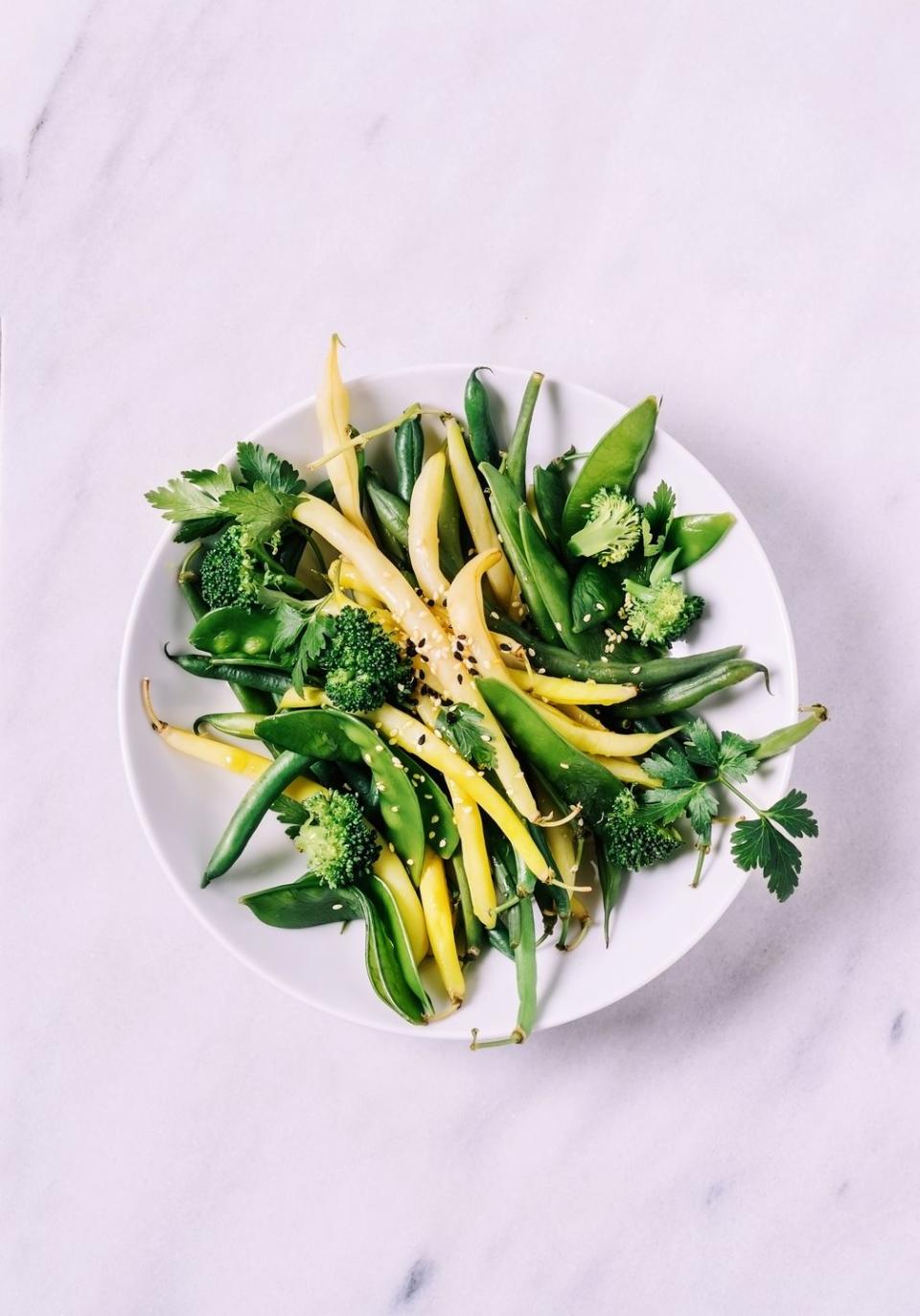
Good news for those who like their food hot: Serving beans and legumes hot maximizes their resistant starch content, says Patterson, although they still contain resistant starch while cold. So, you’ll get a little bit of resistant starch from hummus and bean salad, but more from warm dishes like chili or chana masala.
3. Green (or just ripe) bananas
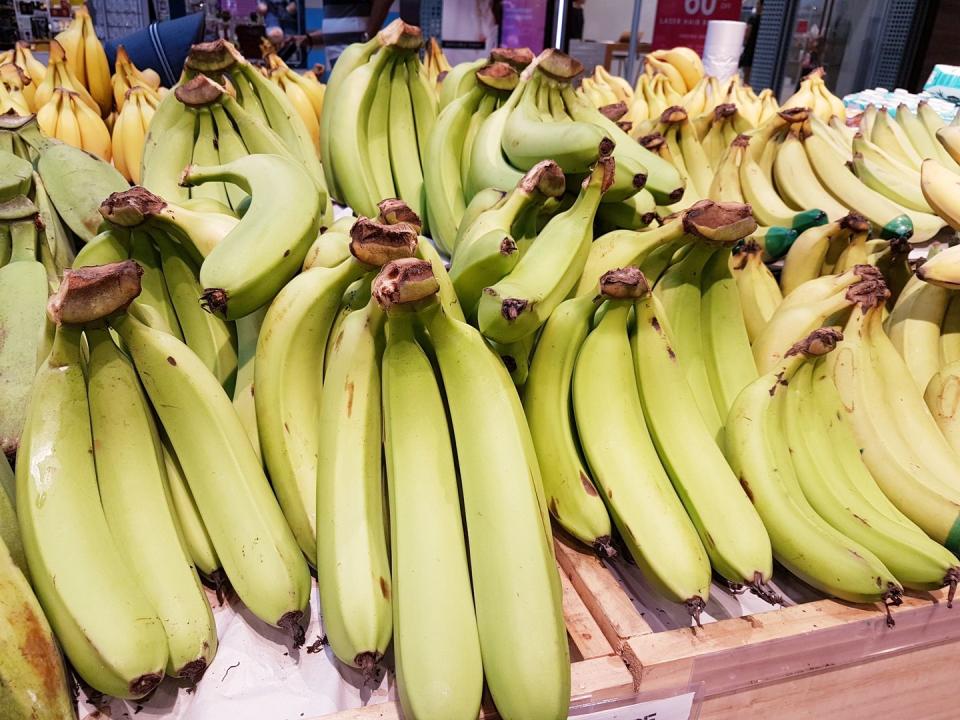
As bananas ripen, much of the starch gets converted into sugar (that’s why they’re sweetest when they’re super ripe and brown). So, unripe green bananas are starchy, and much of that is resistant starch. Eating less sweet bananas may take some getting used to, but try slicing one over slightly sweetened cereal or a yogurt parfait.
4. Green plantains

Patterson also recommends green plantains as a good source of resistant starch. Similar to bananas, they contain resistant starch molecules that haven’t yet been converted into sugar. Cook your plantains and chill them before eating to get the most resistant starch.
5. Reheated rice
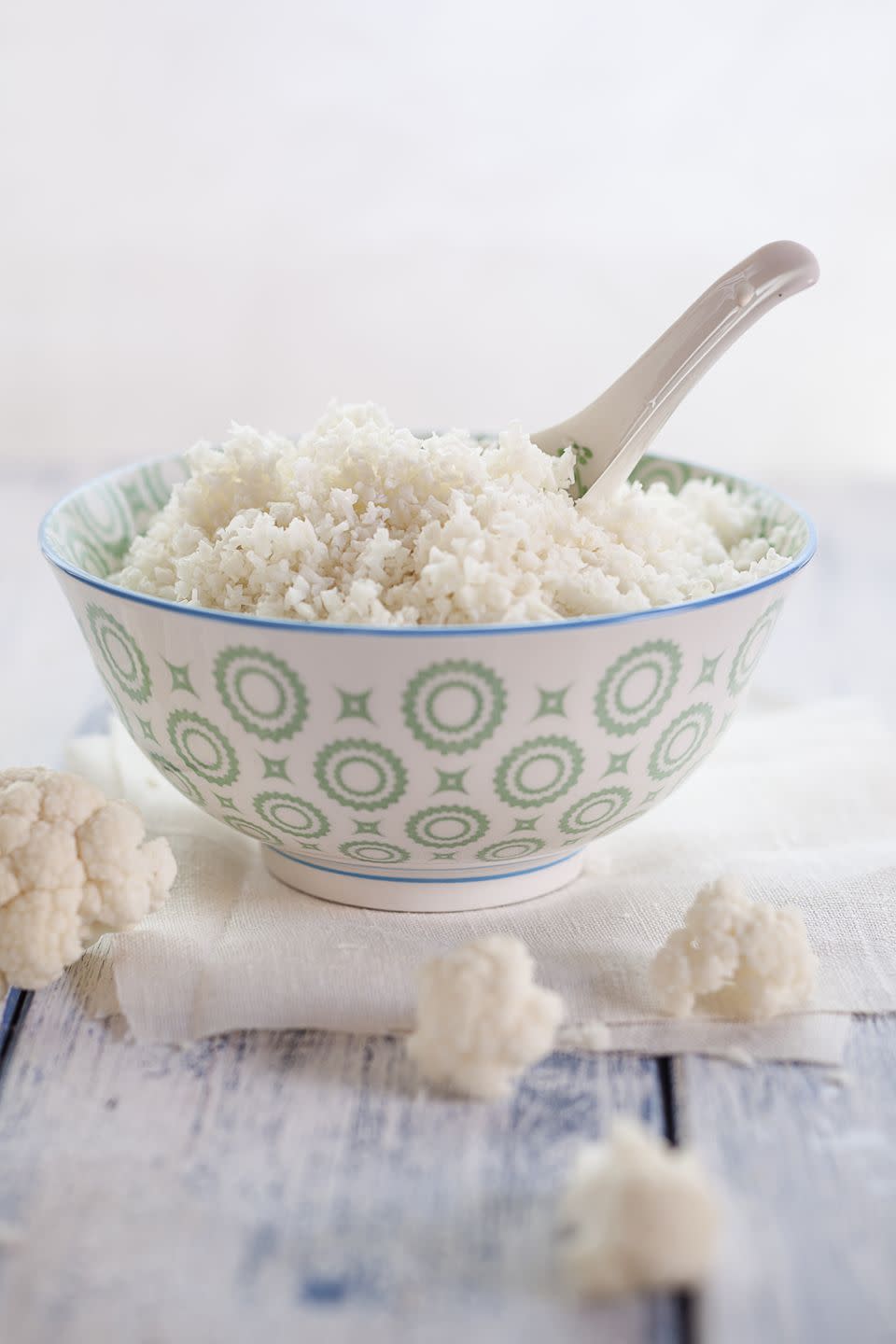
As with potatoes, the starch in rice turns into resistant starch as it cools. Because cold leftover rice sounds terrible, Patterson points out that reheated rice, specifically fried rice, is still high in resistant starch.
6. Jerusalem artichokes (a.k.a. sunchokes)

Jerusalem artichokes—which actually have no relation to green artichokes—are a member of the sunflower family, sometimes called sunchokes. They’re nutty and sweet when raw, but taste potato-y when baked. Serve them chilled to maximize resistant starch, maybe atop a colorful salad.
7. Corn tortillas
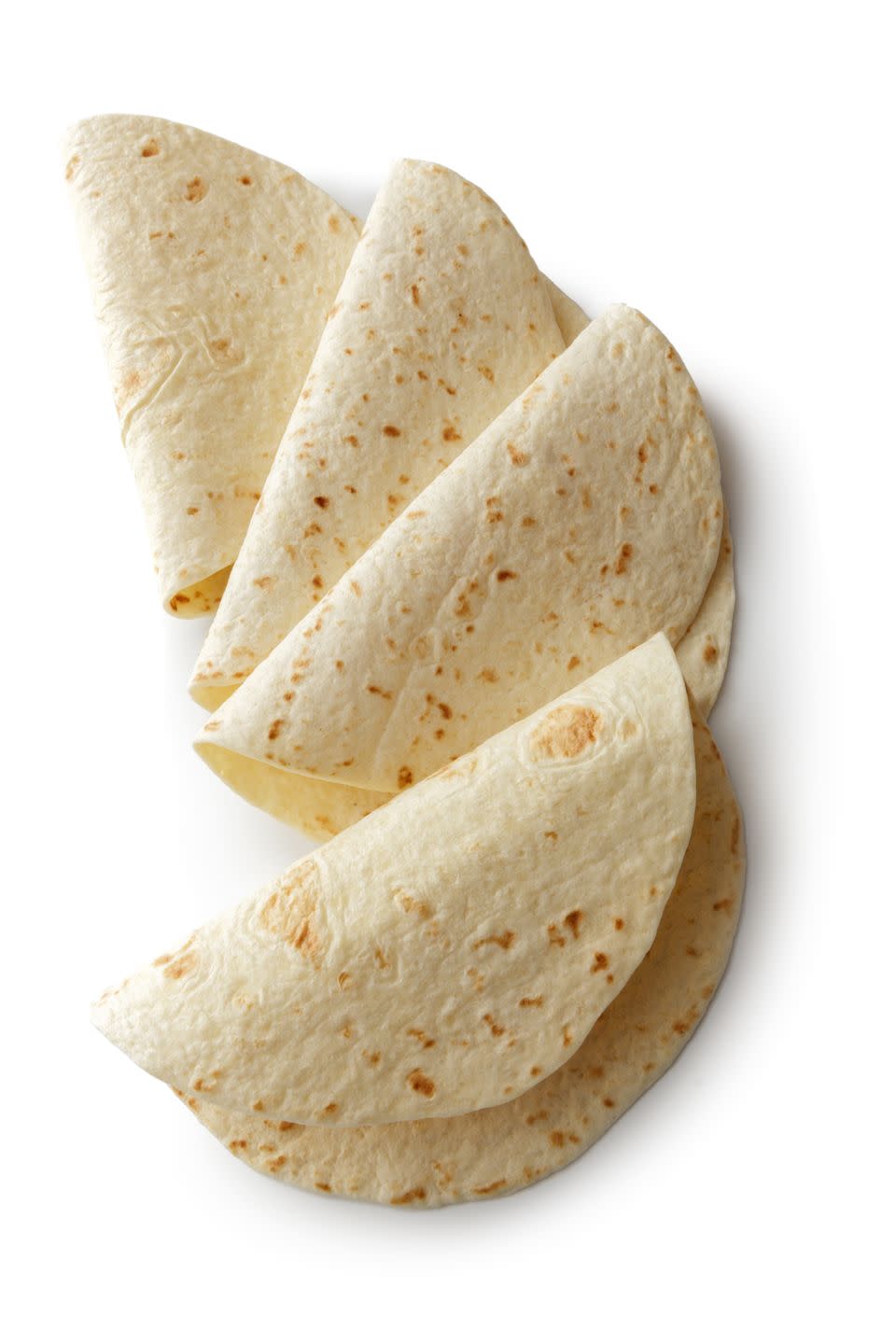
“The longer you store a corn tortilla at room temperature, the more resistant starch is going to form,” Patterson says. You can reheat the tortilla to eat it, but letting it sit on the counter for a few days beforehand will increase the resistant starch content.
8. Oats

While cooked and cooled oats pack the most resistant starch, you can still get quite a bit from a warm bowl of just-cooked oats. If you’re already eating oatmeal for breakfast, keep it up! If not, consider swapping it for your regular breakfast a few times a week.
9. Barley

While several cooked whole grains contain resistant starch, Patterson calls out barley as a particularly good source. Because it doesn’t dry out as much as some other grains when cooked and chilled, barley is also a great candidate for cold grain salads.
10. Tigernuts
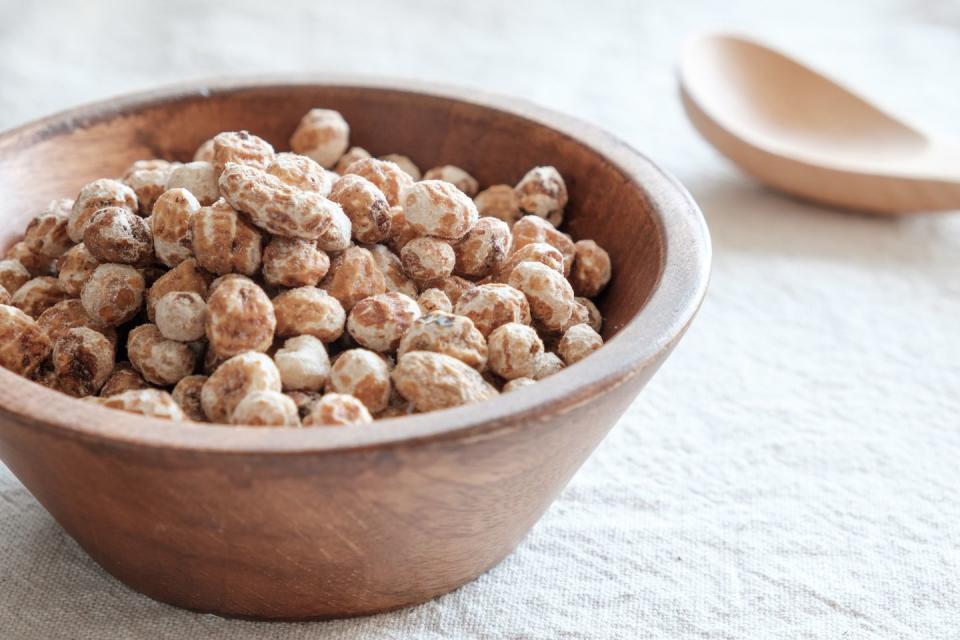
“Tigernuts might be one of the best sources of resistant starch,” Porpora says. They are not actually nuts but small tubers native to North Africa and Mediterranean countries. Tigernuts do not need to be cooked in any special way to bring out resistant starch. They can be enjoyed boiled, raw, or roasted. And tigernut flour is one of the easiest way to work it into your diet.
“My favorite way to use tigernut flour is to swap some of the traditional flour in a cookie or muffin recipe for this great prebiotic flour instead.” Porpora says.
11. Green peas
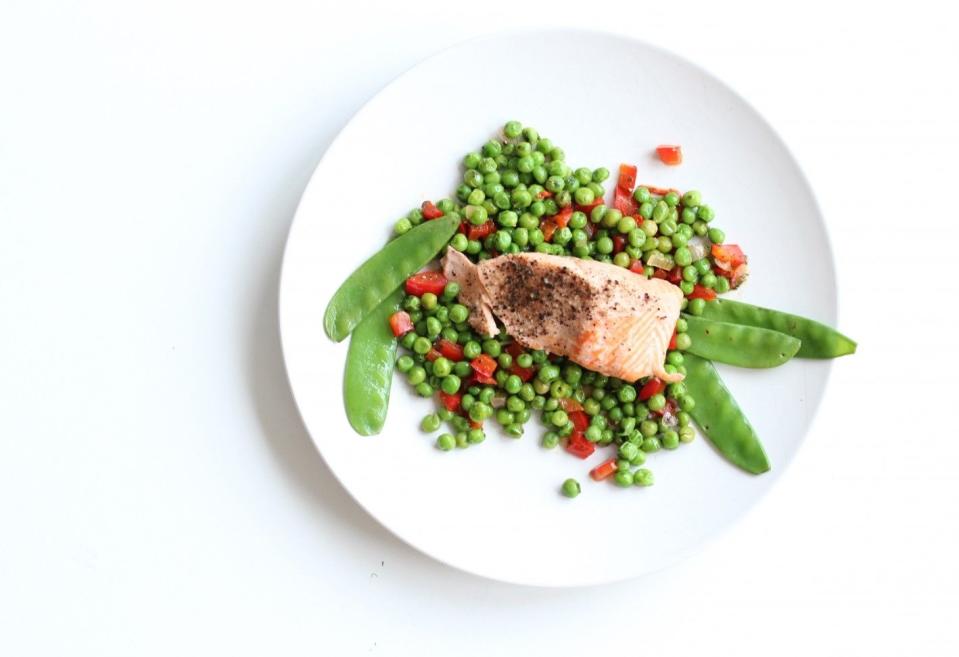
Like potatoes and rice, green peas are a great source of resistant starch when they’re cooked and then cooled. You can add them to your favorite soup or use them as garnish for your greens.
12. Yams

The sweet and satisfying yams are another good source of resistant starch. Just like green peas, they fall in the category of needing to be cooked and cooled for you to get the most resistant starch out of them.
You Might Also Like

